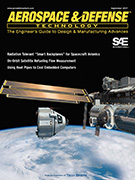Technical Paper
Construction of a CubeSat Using Additive Manufacturing
2011-10-18
2011-01-2568
This paper examines the use of additive manufacturing and the composite SLS material Windform XT to build a 2U CubeSat with an integrated Micro-Electro-Mechanical System (MEMS) propulsion for space flight. The flight of this satellite is intended to examine and test the use of additive manufacturing utilizing Windform XT to produced CubeSat's, as well as certifying a warm gas propulsion subsystems with a magnetic stabilization for CubeSat orbital altitude adjustment. ...The flight of this satellite is intended to examine and test the use of additive manufacturing utilizing Windform XT to produced CubeSat's, as well as certifying a warm gas propulsion subsystems with a magnetic stabilization for CubeSat orbital altitude adjustment. ...The flight of this satellite is intended to examine and test the use of additive manufacturing utilizing Windform XT to produced CubeSat's, as well as certifying a warm gas propulsion subsystems with a magnetic stabilization for CubeSat orbital altitude adjustment. The RAMPART project uses additive manufacturing techniques to build the satellite structures, propellant tanks, printed circuit board cages, solar panel frames, antenna deployment mechanisms, etc. at a fraction of the time of current methods.













